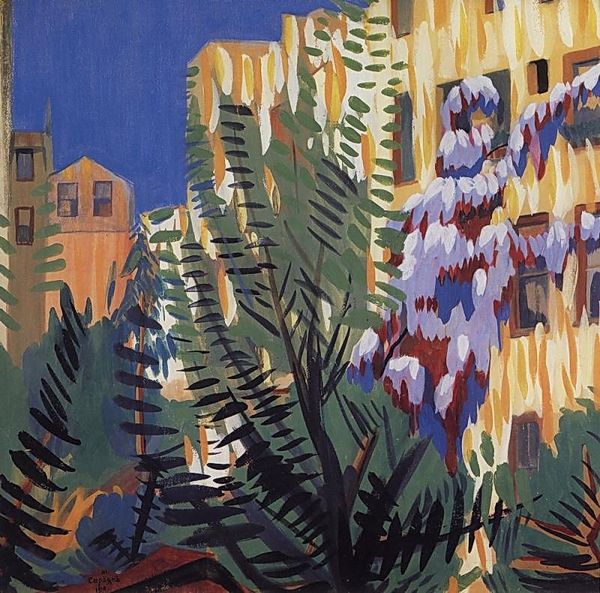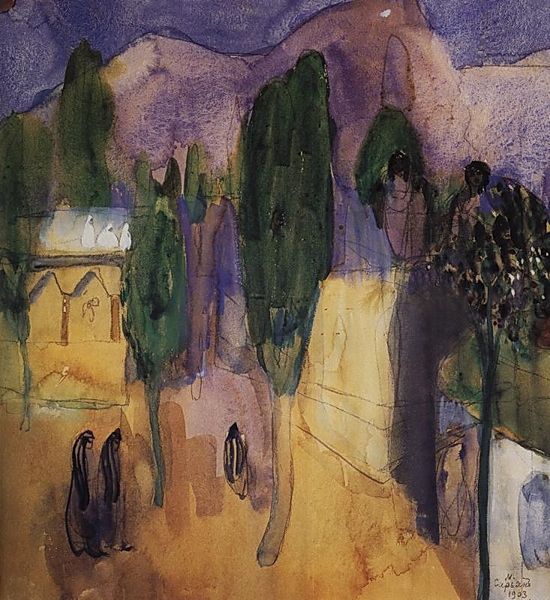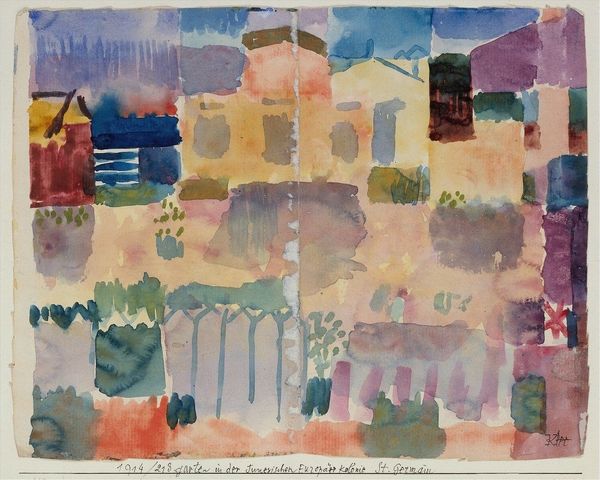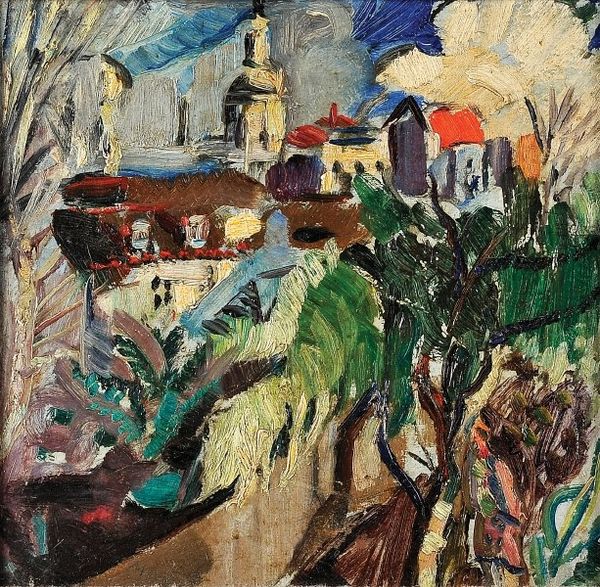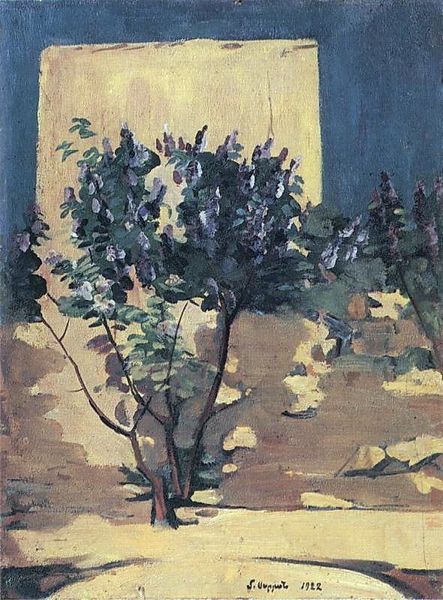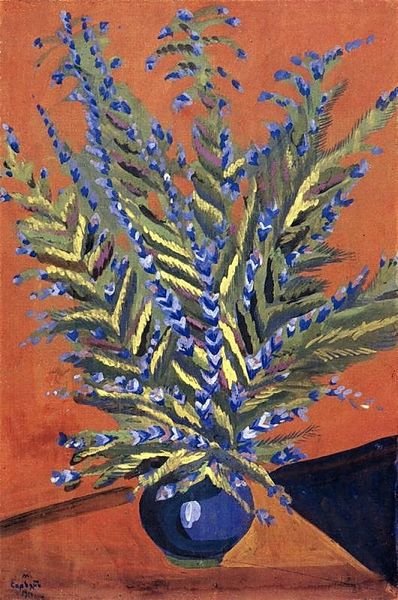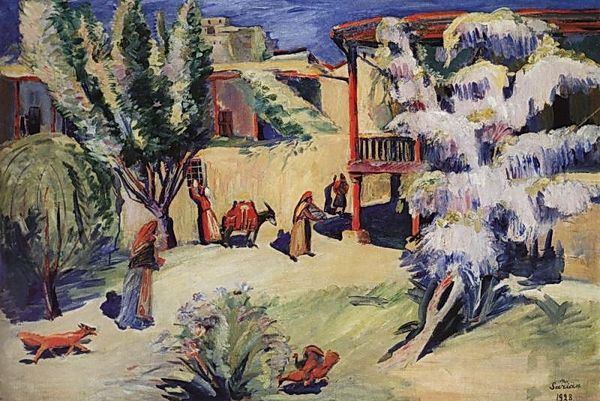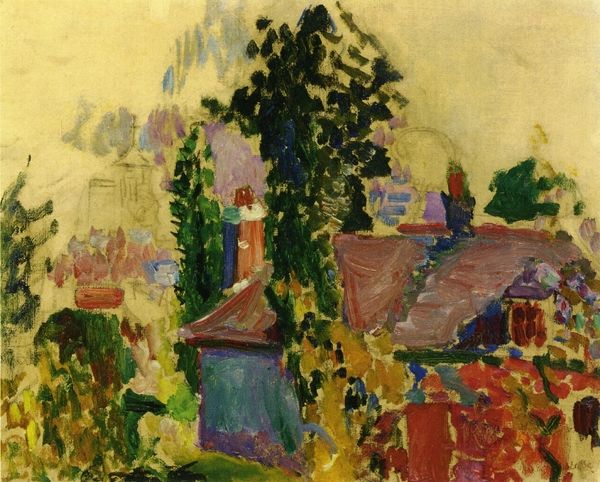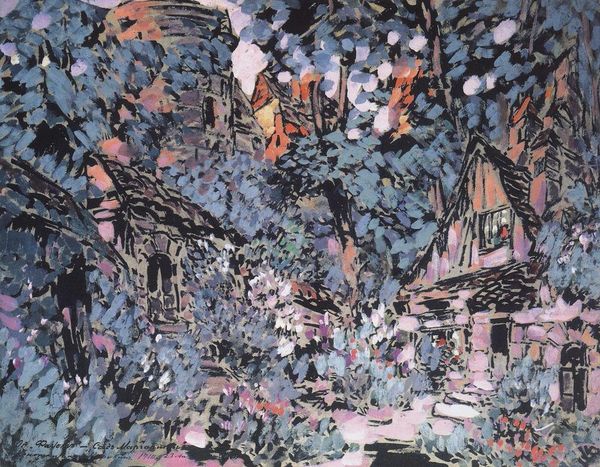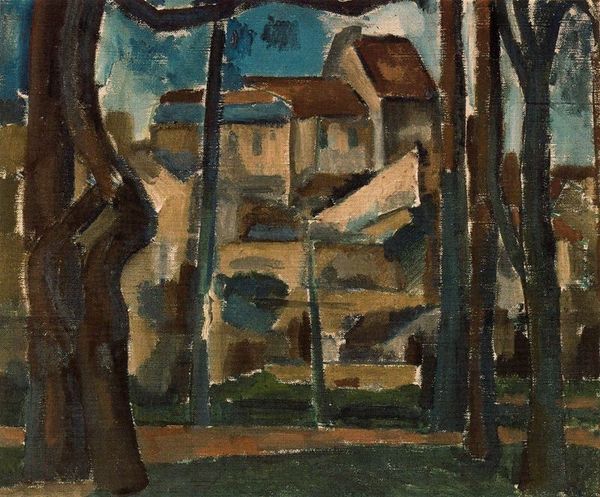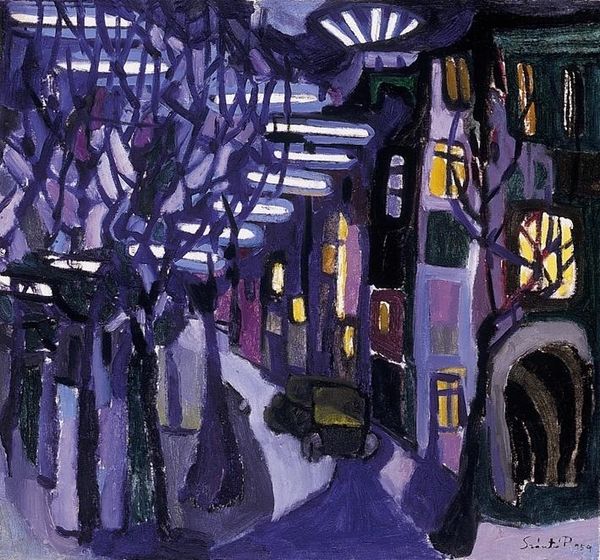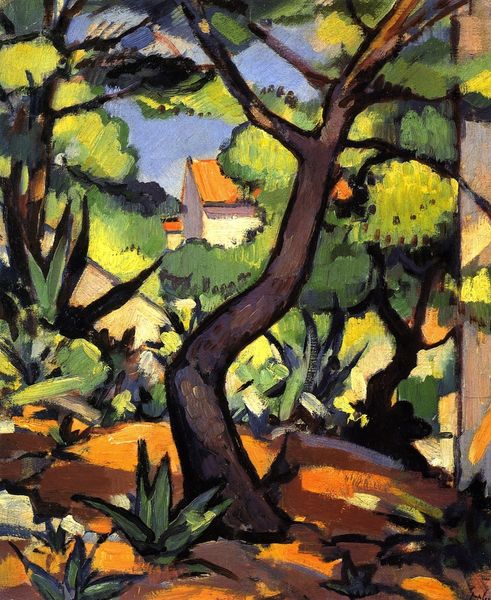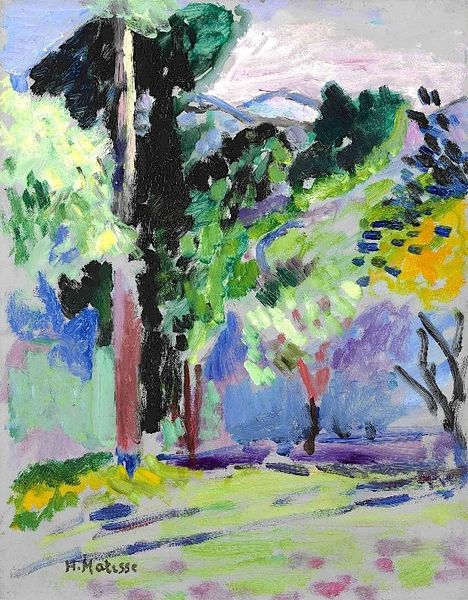
Copyright: Public domain US
Editor: So, this is "A Tree," an oil painting from 1907 by Martiros Sarian. It's surprisingly vibrant, and the tree feels almost alive, bursting with energy in front of that very still building. How would you interpret its visual symbolism? Curator: Notice how the tree dominates the frame. In many cultures, the tree is a potent symbol—often of life, growth, and interconnectedness. Here, the tree’s exuberant foliage might represent vitality or even the artist’s own creative flourishing, set against the backdrop of perhaps more stable or enduring structures of society. What feelings does its proximity to the architecture evoke in you? Editor: It's an interesting contrast, the wildness of nature pressed up against human construction. Maybe a tension between freedom and control? Curator: Precisely! The windows, those apertures to the interior, hint at unseen narratives within. Consider too, how Sarian renders light. Notice how he captures the transient, ephemeral qualities. The quick, impressionistic brushstrokes almost become ideograms in themselves; of fleeting moments, suggesting not just a tree, but the experience of a tree, its sensory and symbolic weight. Editor: So the tree isn't just a tree – it’s about memory, emotion, maybe even a cultural idea of nature? Curator: Absolutely. And the architecture becomes part of that too - a dialogue, a way we frame or contain nature but never entirely succeed in possessing it. It holds in tension both light and shadow. That kind of symbolism persists, think of its resonances in contemporary art… Editor: This has totally changed how I see the painting! I went in thinking 'nice tree', but it's clearly more than just a landscape. Curator: Indeed. The power of visual language is precisely in that layering, inviting multiple interpretations, linking us to cultural memories.
Comments
No comments
Be the first to comment and join the conversation on the ultimate creative platform.
